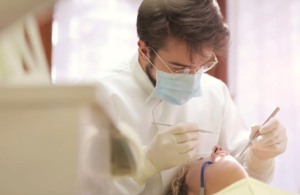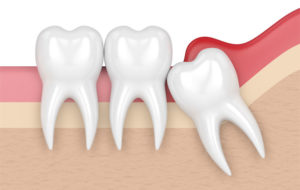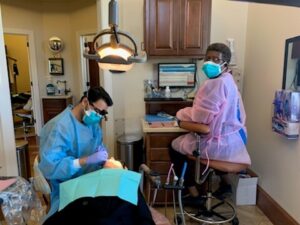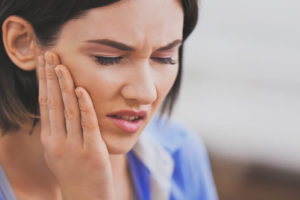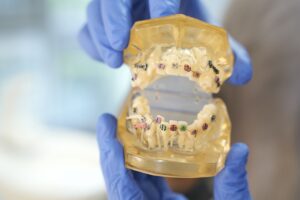A tooth abscess is a painful condition caused by an infection at the root of a tooth or in the surrounding gums. This type of infection can be very serious if not treated properly. Many people wonder how long a tooth abscess lasts, and whether it can go away on its own. In this article, we will explore how long a tooth abscess typically lasts, whether antibiotics can help, and why you should never ignore this kind of infection.
How Long Does It Take for a Tooth Abscess to Go Away?

The length of time a tooth abscess lasts depends on several factors, such as how severe the infection is, whether it receives treatment, and the general health of the person affected.
Factors That Affect How Long a Tooth Abscess Lasts:
- Severity of the Infection: A mild abscess might last a shorter time, but a more severe infection can last longer. If the infection is not treated, it can grow and cause additional health problems.
- Treatment: If you go to the dentist and receive the proper treatment, such as draining the abscess or getting a root canal, the infection will likely go away within a few days to a couple of weeks.
- Your Immune System: Some people have stronger immune systems, which can fight the infection more quickly. However, even with a healthy immune system, it is unlikely that an abscess will go away completely without professional treatment.
- Location of the Abscess: Abscesses in different areas of the mouth may take longer to heal, especially if they are deeper within the gums or tooth root.
In general, if left untreated, a tooth abscess can last from a few days to several weeks. The pain might get worse as the infection spreads, which is why it’s important to seek dental care right away. The infection will not go away by itself, and it may lead to further complications if ignored.
Will Antibiotics Get Rid of a Tooth Abscess?

Antibiotics are often prescribed to help control a tooth abscess by fighting the bacteria that caused the infection. While antibiotics are helpful in controlling the infection, they cannot get rid of the abscess on their own. In most cases, the abscess will not heal until the underlying issue is addressed.
What Antibiotics Do for a Tooth Abscess:
- Control the Infection: Antibiotics work to reduce the number of bacteria and control the infection, which helps decrease pain and swelling.
- Prevent the Infection from Spreading: Antibiotics can prevent the infection from spreading to other parts of your body, such as your jaw or bloodstream. This is especially important if the infection is severe.
- Temporary Relief: While antibiotics help manage the symptoms of a tooth abscess, they don’t treat the underlying problem, which is usually a damaged tooth or infected gums. Once the antibiotic treatment is stopped, the infection might return.
What Antibiotics Don’t Do:
- They Don’t Remove the Abscess: Antibiotics won’t drain the pus or remove the infection from the tooth or gum. Only a dental procedure, such as a root canal or extraction, can fully resolve the problem.
- They Don’t Fix the Tooth: Antibiotics will not repair a decayed or damaged tooth that may be causing the abscess. A dentist will need to treat or remove the tooth to stop the infection from recurring.
Is It OK to Leave a Tooth Abscess?
Leaving a tooth abscess untreated is never a good idea. While it may seem like the pain might go away on its own, ignoring the infection can lead to serious complications.
What Can Happen If You Leave a Tooth Abscess Untreated?
- The Infection May Spread: If left untreated, the infection can spread to other areas of the mouth, jaw, and even into the bloodstream, causing more severe problems like sepsis or infections in other organs.
- Damage to Your Teeth and Gums: The bacteria in the abscess can eat away at the bone and gum tissue around the tooth, which can lead to tooth loss or long-term damage to your mouth.
- Severe Pain and Swelling: The pain from a tooth abscess can get worse if left untreated. You might experience intense throbbing pain, swelling in your face or neck, and difficulty swallowing or breathing.
- Chronic Infection: If the abscess is not treated, it could turn into a chronic infection that might never go away. Even though the pain may subside for a while, the infection could continue to damage your tooth and gums.
For all these reasons, it is crucial to see a dentist as soon as you notice signs of a tooth abscess. A dentist can properly diagnose the condition and recommend the right treatment to get rid of the abscess before it causes further damage.
How to Tell if an Abscess is Healing

After seeking treatment for a tooth abscess, it’s important to keep an eye on the healing process. Healing times may vary depending on the severity of the infection and the treatment received. Here’s what to look for to see if the abscess is healing properly:
Signs That an Abscess is Healing:
- Pain Reduction: One of the first signs that the abscess is healing is that the pain starts to go away. The throbbing sensation should decrease, and you should no longer experience constant discomfort.
- Decreased Swelling: The swelling around the abscess should start to go down. If the abscess was draining pus, the swelling should reduce as the infection heals.
- No More Pus: If pus was draining from the abscess, you should notice that it stops once the infection has been treated and healing begins.
- Normal Gum Color: Your gums should return to a healthy, pink color instead of looking red or inflamed. Swollen or red gums can indicate that the infection has not been fully resolved.
- No More Fever: If you had a fever due to the infection, it should subside once the abscess is properly treated.
When to Be Concerned:
While most abscesses will start to heal after dental treatment, there are a few signs that may indicate complications. If you experience any of the following, contact your dentist:
- Persistent Pain: If the pain doesn’t go away after a few days of treatment, or if it gets worse, this could mean that the infection is not healing properly.
- Continued Swelling: If the swelling doesn’t go down or continues to spread, it might be a sign that the infection is still present.
- Fever: A fever that doesn’t subside after treatment could be a sign that the infection has spread or is still active.
- Difficulty Breathing or Swallowing: If you have trouble breathing or swallowing, this is a serious sign that the infection may have spread to other parts of your body. Seek immediate medical attention if this happens.
Conclusion
A tooth abscess is a serious dental problem that requires professional treatment. Although it may seem like the pain will go away on its own, an untreated abscess can cause severe health issues, including tooth loss, the spread of infection, and even life-threatening conditions like sepsis.
The duration of a tooth abscess depends on factors like severity, treatment, and overall health. While antibiotics can help control the infection, they are not enough to eliminate the abscess on their own. The infection must be treated by a dentist, who may perform a root canal, tooth extraction, or other procedures to fully resolve the problem.
If you have a tooth abscess, do not wait for it to go away on its own. Seek dental care as soon as possible to prevent further complications and to get on the path to healing. The sooner you address the problem, the quicker you can find relief and protect your long-term oral health.


